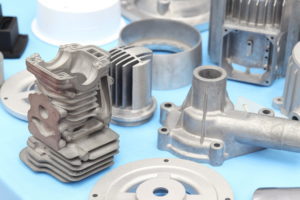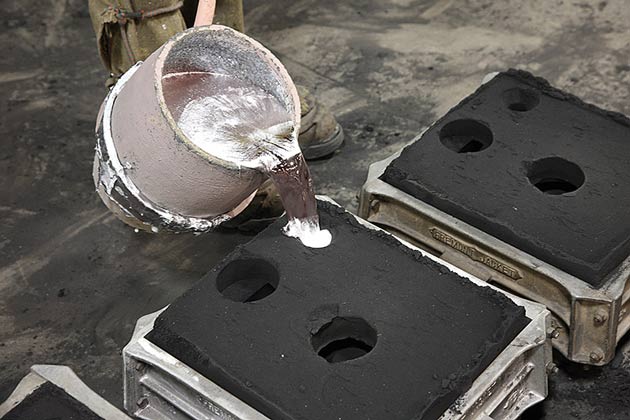The Stahl Specialty Company Diaries
The Stahl Specialty Company Diaries
Blog Article
The Best Strategy To Use For Stahl Specialty Company
Table of ContentsThe Buzz on Stahl Specialty CompanyThe 7-Second Trick For Stahl Specialty CompanyAll About Stahl Specialty CompanyThe Best Strategy To Use For Stahl Specialty CompanyExamine This Report on Stahl Specialty CompanyGetting The Stahl Specialty Company To Work

If you're designing a steel product, you have actually likely considered making use of aluminum as the base material. Pure aluminum has limited applications, so it is usually incorporated with other elements, such as silicon, magnesium, and manganese to form alloys.
Different components and amounts generate a large selection of preferable physical and chemical buildings. And the Aluminum Association (AA), based in North America, has produced specifications that regulate aluminum alloys' structure, properties, and language. There are two sorts of light weight aluminum alloys functioned and cast. Shop workers develop these alloy types in various ways, which substantially affects their features.
A Biased View of Stahl Specialty Company
Cast light weight aluminum alloys are made by melting pure light weight aluminum and integrating it with various other metals while in liquid type. The mix is poured into a sand, die, or investment mold and mildew.

160.0 represents a cast with a minimum of 99.60% aluminum. The 4th figure, which follows the decimal factor, defines if the alloy is a spreading (xxx. 0) or an ingot (xxx. 1). Wrought light weight aluminum alloys likewise start by integrating molten light weight aluminum with other metals. As opposed to cast alloys, nevertheless, they are developed into their last form through procedures such as extrusion, rolling, and bending after the steel has strengthened right into billets or ingots.
There are numerous minor distinctions in between wrought and cast aluminum alloys, such as that cast alloys can have extra considerable amounts of other steels than functioned alloys. The most noteworthy difference between these alloys is the manufacture procedure through which they will go to provide the final product. Besides some surface treatments, cast alloys will certainly leave their mold and mildew in nearly the exact solid form desired, whereas wrought alloys will go through numerous adjustments while in their strong state.
If you assume that a wrought alloy might be the most effective for your job, have a look at some of our articles that clarify more about particular functioned alloys, such as Alloy 6061 and Alloy 6063. On the other hand, if you believe a cast alloy would be much better for you, you can discover more about some cast alloys in our Alloy 380 and Alloy 383 short articles (coming quickly).
What Does Stahl Specialty Company Do?
When choosing a light weight aluminum factory for your production demands, it's crucial to study a number of factors. One of one of the most vital elements to consider is the experience and proficiency of the foundry. Aluminum Castings. Choosing a shop who has the appropriate understanding of the aluminum spreading process, and the profile to show for it, helps to have a successful result for your project
Having the experience and sector understanding to craft your spreadings for optimal production and quality outcomes will enhance the task. Producing aluminum spreading requires a complex set of processes to attain the best outcomes. When picking a new light weight aluminum foundry to partner with, guarantee they have comprehensive industry experience and are knowledgeable concerning all elements of the aluminum casting procedure: design, production, material analysis, and item screening.
The factory ought to additionally have a proven record of delivering extraordinary items that meet or go beyond consumer assumptions. Quality control must also go to the top of your listing when selecting an aluminum foundry. By collaborating with a certified foundry who complies with the requirements for top quality control, you can secure the honesty of your item and ensure it fulfills your specifications.
By picking a firm that offers services that meet or surpass your product requirements, you can be certain that your job will be finished with the utmost accuracy and performance. Certain aluminum shops specialize in particular kinds of manufacturing processes or casting methods. Various components call for various manufacturing strategies to cast aluminum, such as sand spreading or pass away casting.
The Best Guide To Stahl Specialty Company
Pass away casting is the name given to the procedure of producing complex steel elements through use molds of the part, likewise referred to as dies. The procedure uses non-ferrous steels which do not have iron, such as aluminum, zinc and magnesium, due to the preferable buildings of the metals such as low weight, higher conductivity, non-magnetic conductivity and resistance to deterioration.
Pass away spreading production is quick, making high manufacturing levels of elements simple. It produces more elements than any various other procedure, with a high level of precision and repeatability. To find out more about die casting and die spreading materials made use of at the same time, read on. There are three sub-processes that fall under the group of die casting: gravity pass away casting (or long-term mold and mildew spreading), low-pressure die spreading and high-pressure die casting.
After the purity of the alloy is examined, dies are developed. To prepare the dies for spreading, it is important that the dies are tidy, so that no residue from previous productions continue to be.
An Unbiased View of Stahl Specialty Company
The pure metal, likewise known as ingot, is added to the furnace and maintained at the molten temperature of the steel, which is then moved to the injection chamber and injected right into the die. The pressure is after that preserved as the steel solidifies. As soon as the steel solidifies, the cooling procedure starts.
(https://www.artstation.com/stahlspecialc1/profile)
The thicker the wall of the part, the longer the cooling time as a result of the amount of indoor metal that additionally requires to cool. After the component is completely cooled down, the die halves open and an ejection system presses the component out. Adhering to the ejection, the die is closed for the following injection cycle.
The flash is the added material that is cast throughout the process. Deburring gets rid of the smaller sized pieces, called burrs, after the cutting procedure.
More About Stahl Specialty Company

Zinc is one of the most pre-owned alloys for die spreading as a result of its reduced price of basic materials. It's also among the more powerful and secure steels. And also, it has outstanding electric and thermal conductivity. Its corrosion resistance likewise permits the elements to be lengthy enduring, and it is just one of the extra castable alloys as a result of its reduced melting point - Aluminum Casting.
As stated, this alloy is just one of one of the most commonly made use of, yet makes will, at times, choose aluminum over zinc as a result of light weight aluminum's production advantages. Light weight aluminum is extremely affordable and one of More Bonuses the a lot more flexible alloys. Aluminum is used for a variety of different items and industries anything from home window frames to aerospace materials.
Report this page